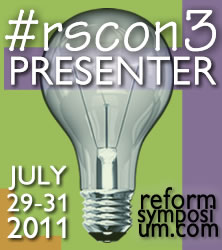 I was sitting at my desk in the basement of Wetmore Hall, watching instructors before 10AM scrambling through the resource library fixed to one wall of my office when one asked me if I’d read the book she’d planned to use with her students, hoping that I’d be able to tell her the ending since she hadn’t quite finished it overnight. Overnight?! I thought. I’m lucky to finish a novel in a month. Her retort? Her students would complete it in an hour. A novel in an hour? I gasped with disbelief. Yes! She said. It’s a TRIBES activity learnt when doing her Bachelors of Education degree and it’s a wonderful thing for exposure to books, critical thinking and interaction among students.
I was sitting at my desk in the basement of Wetmore Hall, watching instructors before 10AM scrambling through the resource library fixed to one wall of my office when one asked me if I’d read the book she’d planned to use with her students, hoping that I’d be able to tell her the ending since she hadn’t quite finished it overnight. Overnight?! I thought. I’m lucky to finish a novel in a month. Her retort? Her students would complete it in an hour. A novel in an hour? I gasped with disbelief. Yes! She said. It’s a TRIBES activity learnt when doing her Bachelors of Education degree and it’s a wonderful thing for exposure to books, critical thinking and interaction among students.
The basics of how it’s done are simple.
- Pick a novel you want to use in class.
- Divide your class into small groups.
- Identify appropriate sections where enough sense of the characters and plot can be made, isolated from other sections.
- Cut off the page numbers if any exist.
- Rip (gasp) the book up into those sections and give each group one section (or perhaps less blasphemously – divided up e-reader versions), but don’t tell them how their section relates in plot or sequence to the other sections of the book.
- Tell each group to read their section in 1 hour.
- After that hour, each group has another hour to come up with a creative way of tell the story from that section to the rest of the class.
- Have groups present their section in whichever format they chose, but out of order.
- Allow groups to sort out how the story actually fits together.
I was so inspired by this concept (even though ripping apart a book initially made my skin crawl) because I instantly knew it could be adapted to so many contexts, including content-driven EAP, where there is so much required reading from aligned credit university courses.
Some initial benefits I see
Reading focus
- Students are exposed to the gist of novels in a short period of time, which allows instructors to use more books and a wider variety in class without spending too much time on one that doesn’t appeal to the learner’s interests. If it’s a not one that goes over well! Better one hour than one semester.
- Teachers can expose learners to a wider number of books than if studying only one in detail. Should learners demonstrate interest in the book after Novel-in-an-hour, maybe they’ll be inspired to read the entire thing.
Critical thinking
- Without only one chapter (or section) to read, learners won’t know what has happened or will happen in the other sections. This encourages them to consider the character development, dialogue and plot available to them and fill in the gaps with reasonable ideas based on the evidence provided in their section.
- Learners need to consider the most effective and creative way to demonstrate the development of their section in a coherent and meaningful way (e.g. a newspaper format, a blog post, a dramatic play, a telephone call, a movie review, a brochure, a song, a board game, a video, etc.)
- With all section summaries presented out of order, students need to put the pieces together into a coherent story that works.
- With other sections potentially misunderstood, misrepresented or misinterpreted in the creative output chosen, learners evaluate potential errors or discrepancies that don’t fit in their overal theory of the story’s content.
Oral skills
- Learners work together to understand the meaning of lexis included in their sections.
- Learners negotiate what type of creative way of depicting their section’s content accurately.
- Groups ask other groups for clarification when they present their sections.
- Depending on their choice, learners may practice pronunciation, intonation and stress in dramatic interpretations.
 I think no matter what context you teach in, this activity can take many different turns and result in a whole slew of unique types of presentations. It promotes not only reading, but creative and critical though as well as interaction between learners. As #RSCON3 quickly approaches, the session I’m leading will be at 5:30PM EST on Maximising interaction between learners in reading and writing focussed classes (click here to join the session), during which I’ll talk about other ideas like this, that move away from isolated learning and practice, to collaborative projects that encourage interaction.
I think no matter what context you teach in, this activity can take many different turns and result in a whole slew of unique types of presentations. It promotes not only reading, but creative and critical though as well as interaction between learners. As #RSCON3 quickly approaches, the session I’m leading will be at 5:30PM EST on Maximising interaction between learners in reading and writing focussed classes (click here to join the session), during which I’ll talk about other ideas like this, that move away from isolated learning and practice, to collaborative projects that encourage interaction.
For further reading and anecdotes about using Novel-in-an-hour, please check out these links:
One experience: http://www.proteacher.net/discussions/showthread.php?p=258380
Another experience: Another one-page individual use
A view: Benefits on NIAN

COOOOOOOoooL class activity ! Might not make it to your presentation as it’s pretty late for me, but enjoy !
Thanks, Brad. Ya, it is a damn cool activity. I can’t wait to try it out with historical documents in the fall.
Fantastic post and activity. I hope your session goes really well. Will try to be there!
My university did a study last year that showed that only one in five teenagers in Turkey actually own a book, so any activity like this that could bring the joy of reading to the younger generation excites me greatly.
Good luck with your presentation, I’ll try to tune in for it.
Thanks Tara and Adam. =) I hope you are able to come. I’ve modified the link in the post to go directly to the session room.
[…] further contemplation, please see: Novel in an Hour – from RSCON3 The Virtual Round Table […]